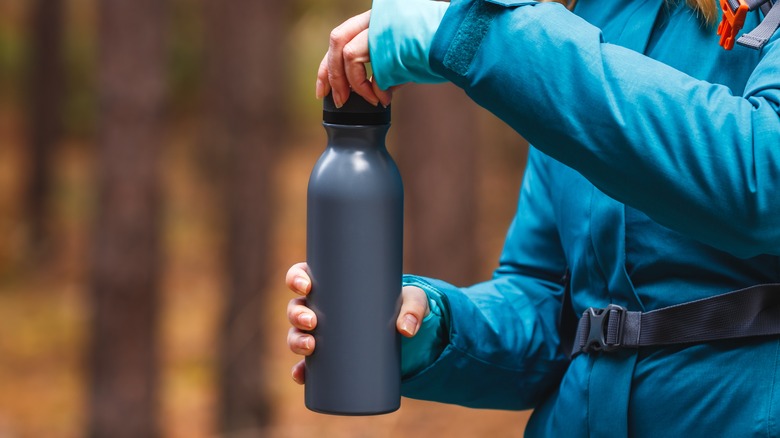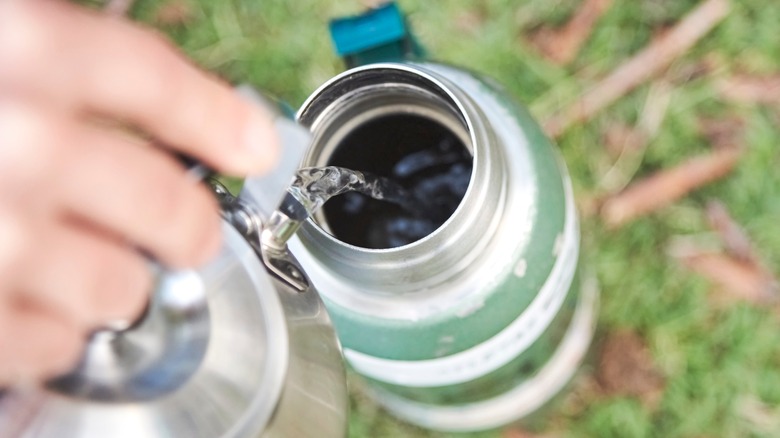The Hot Water Hack To Get More Out Of Your Thermos
If you've ever packed soup for lunch or hot tea for a chilly day and opened your thermos to find the contents disappointingly lukewarm, you know firsthand that thermoses don't always work perfectly. That's because if a thermos is at room temperature, the hot liquid inside will lose heat quickly. However, there's a simple hack to make your thermos work smarter, not harder.
Just fill your thermos with hot (but not boiling) water, secure the lid, and let it sit for a few minutes. It's important not to use boiling water for this preheating, and you should never clean a thermos with boiling water either, as it can damage the thermos and may even break the vacuum seal that provides insulation.
After a few minutes, empty the hot water from the thermos and fill it with your hot liquid or meal. Pro tip: heat what you plan to put in the thermos to a slightly higher temperature than you normally would, to make up for any heat that might be lost. This hack isn't just for liquids, stews, and soups; it also works for solid food like chicken nuggets, crispy potatoes, or roasted vegetables.
How does a thermos even work?
A thermos operates by limiting the transfer of heat between its interior and the external environment. It's all a balancing act to reach thermal equilibrium. For instance, when you place a cup of hot coffee in the fridge to cool it down, the coffee is trying to reach the cooler temperature of the fridge, while the fridge is working to equalize with the coffee's warmth. A thermos slows this exchange down.
It gets a bit scientific, but in essence, a thermos employs multiple layers for insulation. An inner bottle is encased by a double-walled layer — formerly, this double-walled layer was commonly filled with glass or ceramic, but it's now often constructed with two stainless steel walls that create a vacuum. This vacuum, being devoid of atoms, impedes the transfer of energy; heat has difficulty entering or escaping. An additional outer bottle encases the vacuum layer, providing extra insulation and protecting the vacuum layer from damage. Thus, when you preheat the inside of a thermos with hot water, the vacuum layer retains the heat, preventing it from dissipating through the outer bottle.
Does this hack work both ways?
Perhaps you prefer smoothies to oatmeal, or you tend to favor iced coffee over a hot cup of joe when bringing breakfast to work. If you're curious about whether a similar trick can be used to keep a thermos cool so that cold foods remain chilled for longer, the answer is yes!
If such instances, place your thermos in the freezer without its lid to speed up the cooling process. Otherwise, the thermos will strive to prevent the freezer's cold air from entering its interior. If you are really in a hurry, simply fill your thermos with ice water, secure the lid, and let it sit for a few minutes. After discarding the water, your thermos will be chilled and ready to be filled with your choice of cold beverage, pudding, yogurt, or even fresh-cut fruit, cubed cheese, carrot sticks, cucumber spears, or crinkle-cut watermelon fries. Whatever you choose, ensure your thermos is utilized to its fullest potential.



